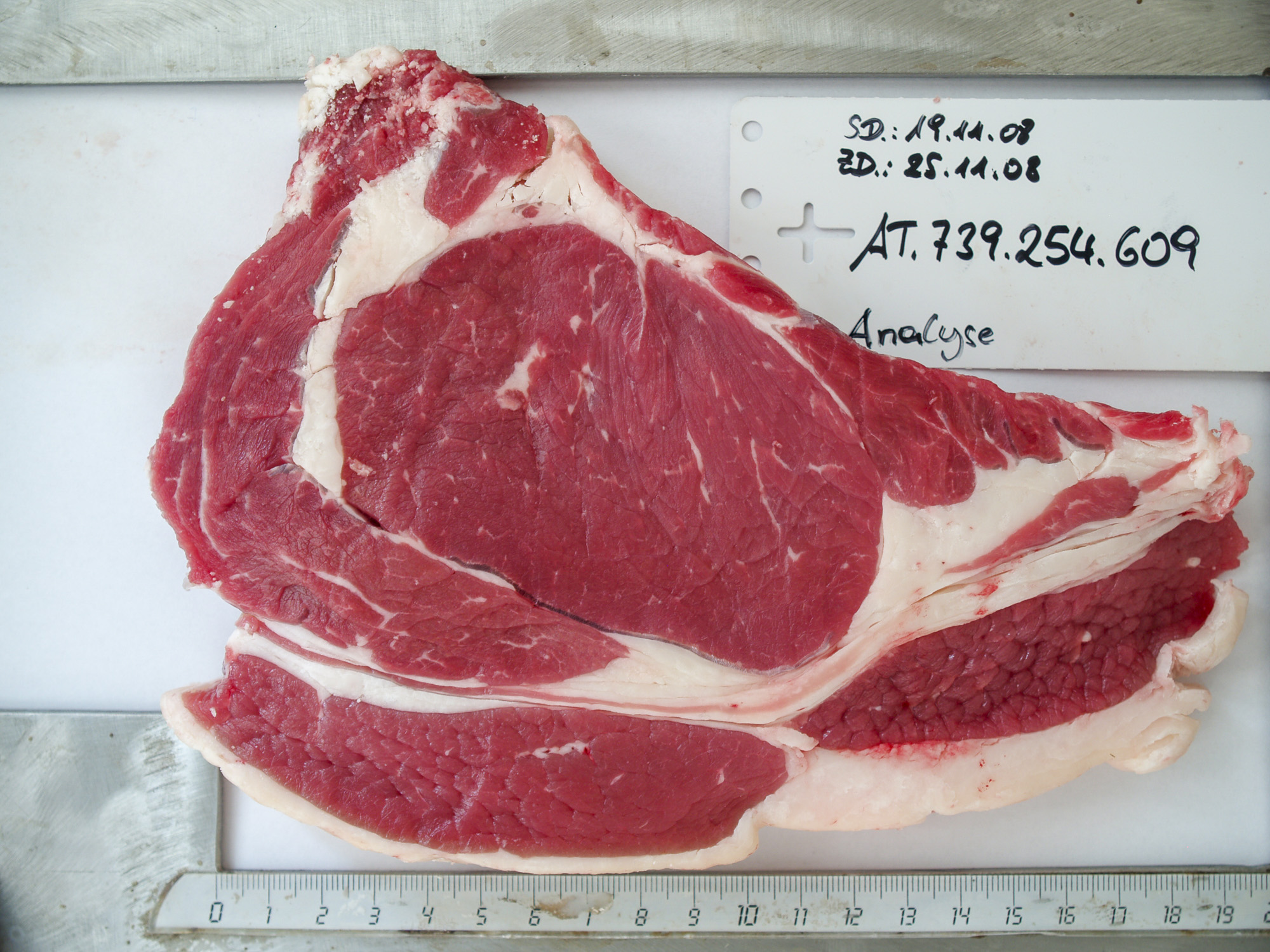What is meat quality and what influences it?
Tenderness, juiciness, meat and fat color, fat content, fatty acid pattern are important internal meat quality characteristics . However, it is not enough to just visually assess the carcass halves; equipment and analyzes are required.
Meat quality is influenced by many factors. These concern
- the animal itself (cattle category, breed, age at slaughter, slaughter weight),
- the feeding (type of feed, amount of concentrated feed, final fattening before slaughter), but also
- Processes surrounding slaughter as well
- the preparation in the kitchen.
Outside Europe, certain meat quality characteristics have been routinely measured at slaughterhouses for years.
What is currently being researched into meat quality?
In Europe, meat quality tests are carried out as part of research projects - including at the HBLFA Raumberg-Gumpenstein. It is repeatedly suggested that internal meat quality characteristics should be included in carcass assessment in addition to the 5-part EUROP meat fat class classification . However, rapid methods and devices are needed to broadly record meat quality characteristics in the field.
In addition to all of these understandable methods, there is the “emotional” quality that is important to consumers. It includes keywords like
- animal welfare,
- Attitude,
- But also slaughter
- Sustainability and operational aspects.
If you want to know more about beef production - from suitable cattle breeds to crossbreeding, feeding and other factors to consider, you should listen:
In this podcast episode, Priv.-Doz. Dr. Andreas Steinwidder with Dr. Margit Velik about the concept of quality in beef, what influences quality and what is currently being researched. – Just take a look:
Pictures about meat quality assessment















